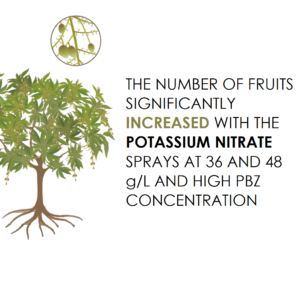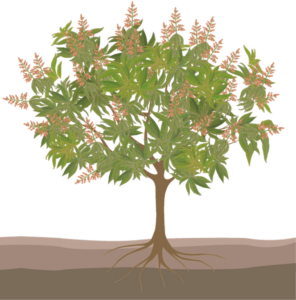The exact mechanism of foliar applied potassium nitrate in mango on bud dormancy break is still not fully understood. A flower intensity index of 4 (flowers all over the canopy) and longer inflorescences in paclobutrazol (PBZ) treated trees was a result of induction of flower bud break by 2% KNO3 sprays, while control trees exhibited a flower intensity index of 2 (less than 25% of the canopy have flowers). PBZ treated trees showed 12,3% longer panicles and 67% higher fruit retention (Table 1).
Mango shoots must have low gibberellic acid (GA) content to allow total non-structural carbohydrates, primarily starch, to accumulate in the leaves and buds, leading to the early formation of floral initials. Potassium nitrate induces bud break of quiescent pre-existing floral buds and is not responsible for the transformation of vegetative buds to reproductive ones, because floral initials were present before KNO3 application.
Table 1. Effect of paclobutrazol (at 1 g of PBZ per meter canopy diameter) treatment on the intensity of flowering and retention of fruits in KNO3-sprayed ‘Carabao’ mango trees.



